Abstract
We present the development and the evaluation of a Bayesian network for the diagnosis of community-acquired pneumonia. The Bayesian network is intended to be part of a larger decision support system which assists emergency room physicians in the management of pneumonia patients. Minimal data entry from the nurse or the physician, timely availability of clinical parameters, and high accuracy were requirements we tried to meet. Data from more than 32,000 emergency room patients over a period of 2 years (June 1995-June 1997) were extracted from the clinical information system to train and test the Bayesian network. The network performed well in discriminating patients with pneumonia from patients with other diseases. The Bayesian network achieved a sensitivity of 95%, a specificity of 96.5%, an area under the receiver operating characteristic of 0.98, and a predictive value positive of 26.8%. Our feasibility study demonstrates that the proposed Bayesian network is an appropriate method to detect pneumonia patients with high accuracy. The study suggests that the proposed Bayesian network may represent a successful component within a larger decision support system for the management of community-acquired pneumonia.
Full text
PDF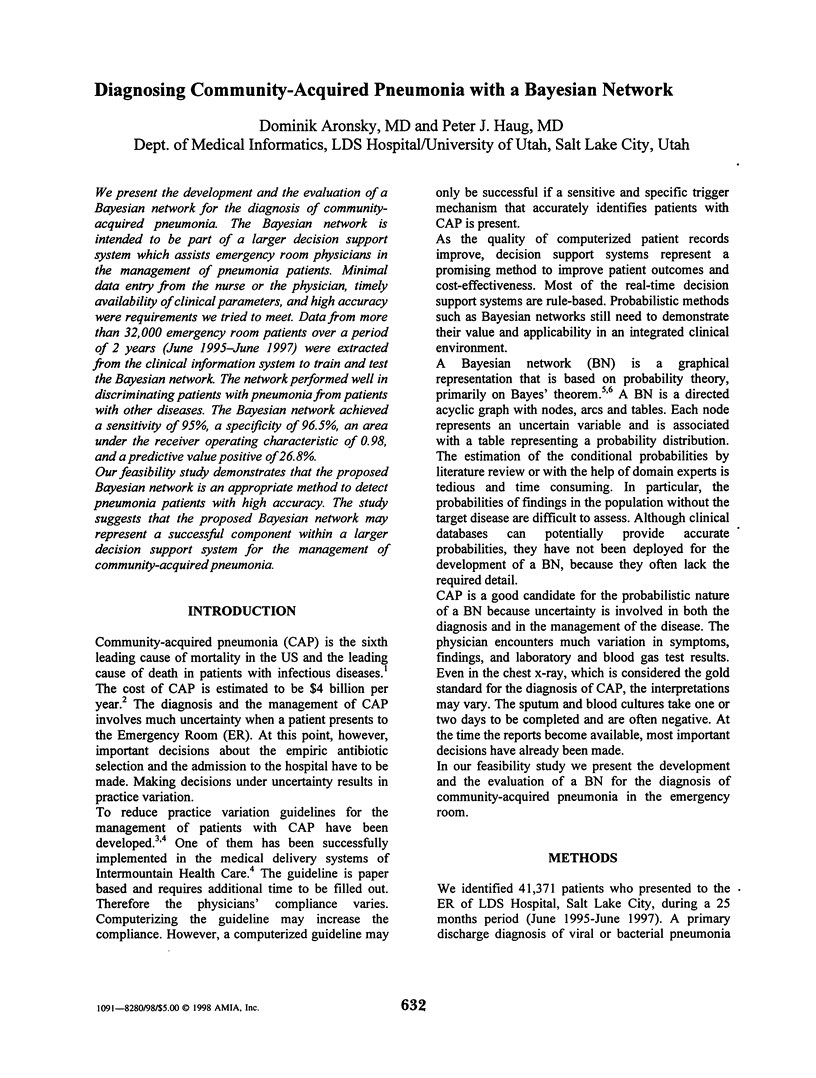
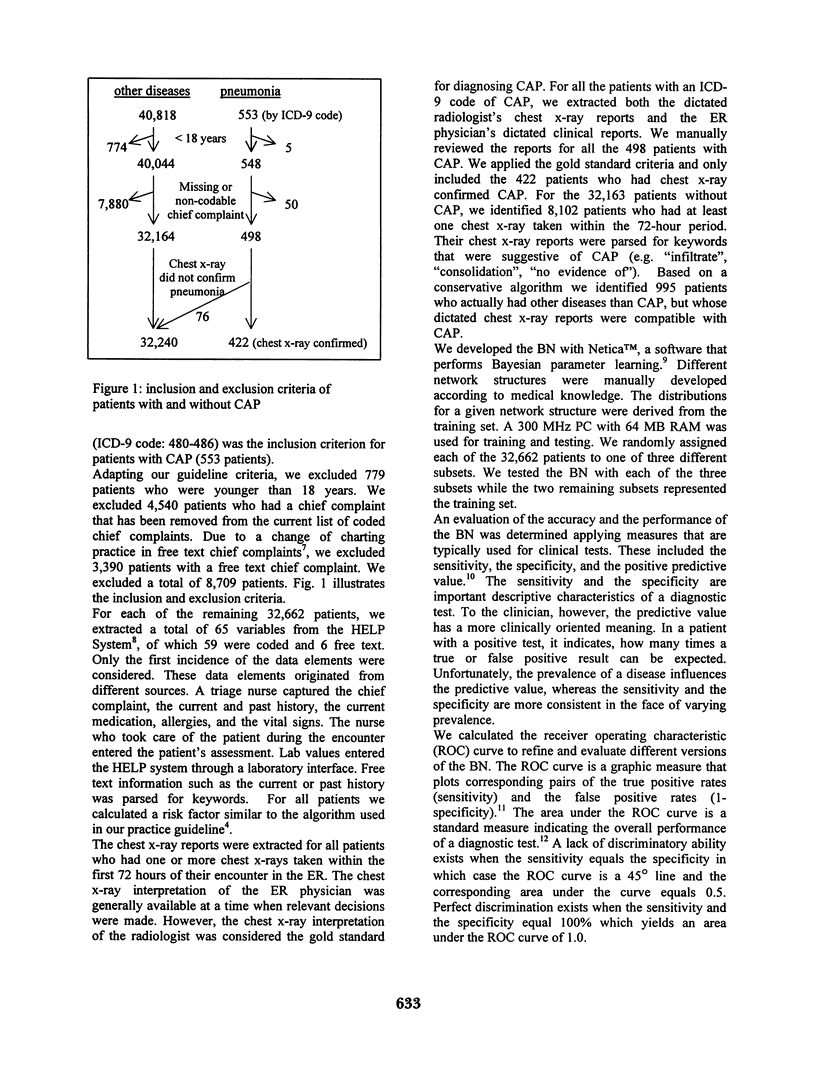
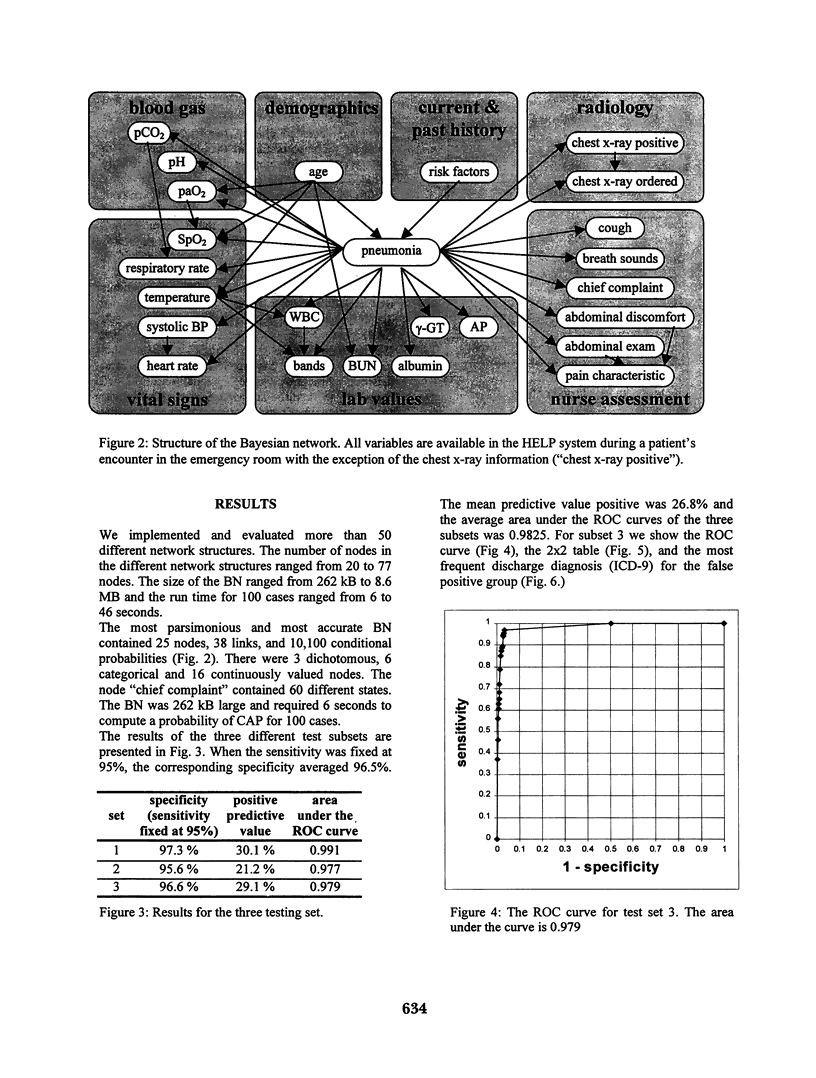
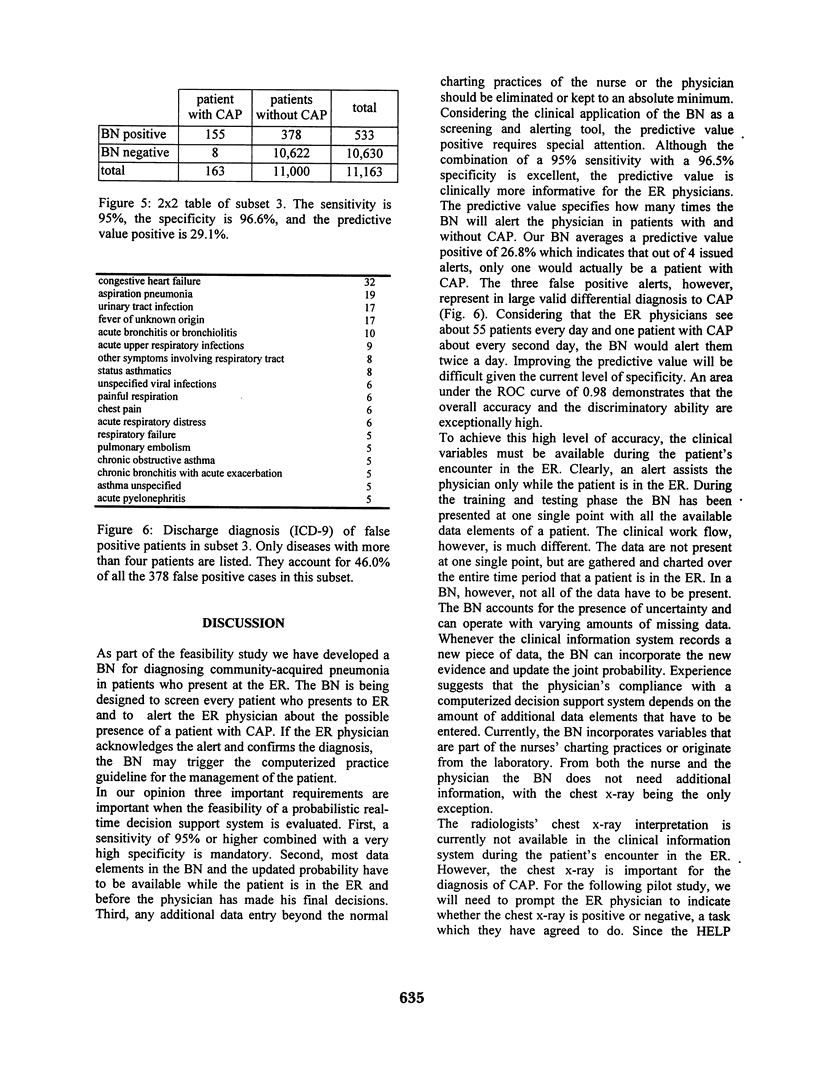
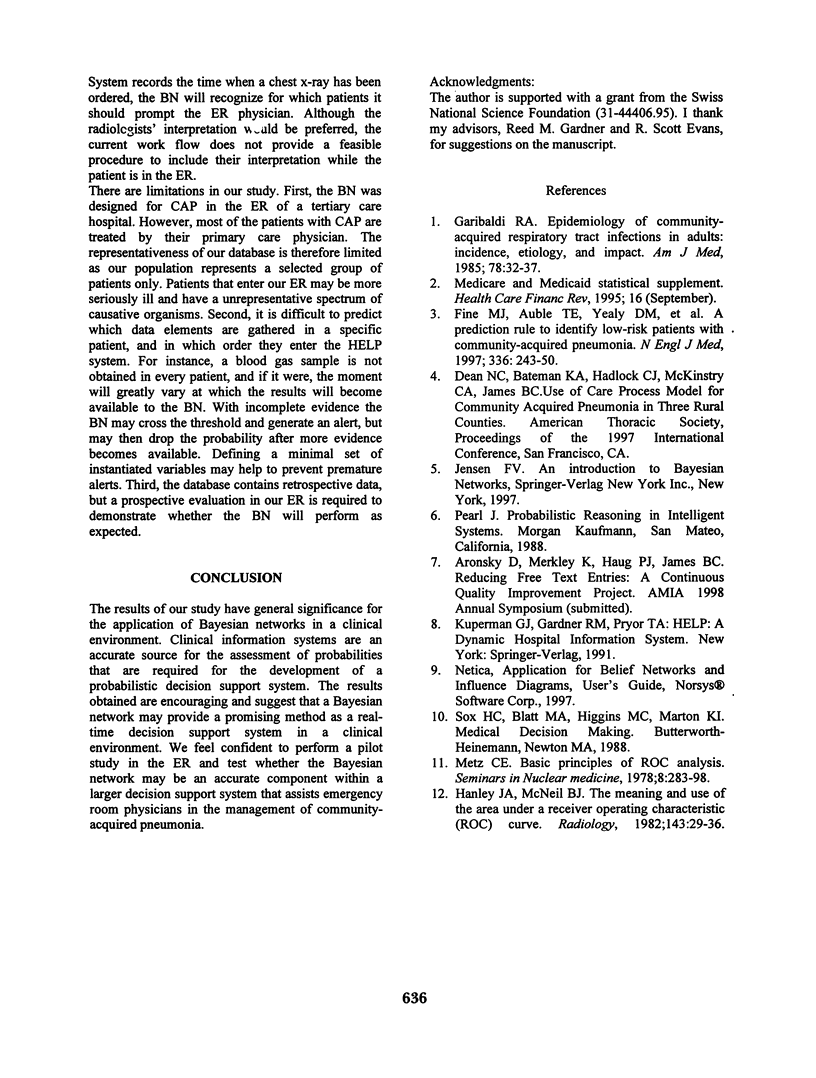
Selected References
These references are in PubMed. This may not be the complete list of references from this article.
- Fine M. J., Auble T. E., Yealy D. M., Hanusa B. H., Weissfeld L. A., Singer D. E., Coley C. M., Marrie T. J., Kapoor W. N. A prediction rule to identify low-risk patients with community-acquired pneumonia. N Engl J Med. 1997 Jan 23;336(4):243–250. doi: 10.1056/NEJM199701233360402. [DOI] [PubMed] [Google Scholar]
- Garibaldi R. A. Epidemiology of community-acquired respiratory tract infections in adults. Incidence, etiology, and impact. Am J Med. 1985 Jun 28;78(6B):32–37. doi: 10.1016/0002-9343(85)90361-4. [DOI] [PMC free article] [PubMed] [Google Scholar]
- Hanley J. A., McNeil B. J. The meaning and use of the area under a receiver operating characteristic (ROC) curve. Radiology. 1982 Apr;143(1):29–36. doi: 10.1148/radiology.143.1.7063747. [DOI] [PubMed] [Google Scholar]
- Metz C. E. Basic principles of ROC analysis. Semin Nucl Med. 1978 Oct;8(4):283–298. doi: 10.1016/s0001-2998(78)80014-2. [DOI] [PubMed] [Google Scholar]


